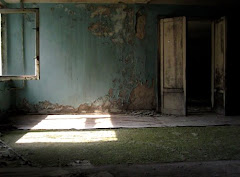Health of Liquidators (Clean-up Workers), 20 Years after the Chernobyl
Abstracts, P.27-28.
Organized by PSR/IPPNW
November 12, 2005.
Contact: Klosterberg 23, CH-4051 Basel
sekretariat@ippnw.ch, www.ippnw.ch
Genomic Instability After
Institute of Genetics and Cytology,
E-mail: R.Goncharova@igc.bas-net.by
Assessment of the remote consequences of the
The
The problem of biological efficiency of low doses and low dose rates became central radiobiological problem after the
Since 1986 we have been studying the biological effects of chronic low dose radiation in natural populations of wild small mammals named bank vole and in laboratory mice, exposed to chronic irradiation at radioactively contaminated sites [2]. We established genetic effects of low dose chronic irradiation in somatic and germ cells of bank vole and laboratory mice in the range of doses from close to background and up to 10 cGy [2–5]. The analysis of our and literature data shows that the doubling dose estimates for acute irradiation of somatic cells in bank vole and human lymphocytes as well as for germ cells in laboratory mice are close to each other [4]. Therefore, the choice of bank voles as a model species for assessing radiation genetic risk is justified. (see table 1).
The recent general report on mortality in the cohort of atomic bomb survivors followed up by the Radiation Research Foundation give strong evidence that there is direct, statistically significant evidence of risk in the dose range of approximately 0-0.10 Sv [6]. Pierce and
Further, recent cellular and molecular studies have increased our understanding of low dose radiation effects, first of all induced genome instability and bystander effects.
We have analysed the long-term development of mutagenesis in bank vole populations chronically exposed to low doses of ionizing radiation over 22 animal generations within 1986–1996 [2]. The frequencies of different end-points (chromosome aberrations in bone marrow cells and embryonal mortality) as well as the whole-body absorbed dose rate and absorbed doses from external and internal exposure were determined for bank populations inhabiting four sites in Belarus with different ground deposition of radionuclides (8-1526 kBq/m2) due to the Chernobyl accident. It has been first revealed that the main feature of the long-term development of mutagenesis is a steady increase in the rate of chromosome aberrations and embryonal lethality over 22 generations while the whole body absorbed dose rates exponentially decreased since 1986 [7]. These findings have shown that the long-term chronic low-dose exposure of mammals over many generations result in a transgenerational accumulation of genomic instability, manifested in cellular and systemic effects [8]. This transgenerational long-term effect of chronic low dose exposure is detrimental because the genomes of animals in distant generations are more sensitive to the impact of very low radiation doses, as compared to the genomes of animals in a few first generations. There is also good evidence about the radiation-induced genomic instability in F1 and F2 offspring after irradiation of human males or both parents before conception.
For the time being there is great controversy of the long–term health consequences of the
As to ionizing radiation-induced late effects, such as cancer incidence, hereditary and development effects, it is necessary to keep in mind the following circumstances
1) Radiation-related cancer risks at low doses among atomic survivors with doses less than 0.5Sv are well established by Pierce and
2) There is an increasing set of data on inverse radiation dose-rate effects on different and-points at somatic and germ cells of animals and human. We have shown inverse radiation dose-rate effects on somatic mutations of bank voles chronically exposed to the
3) Recently, The scientists of Radiation Effects Research Foundation give strong evidence of radiation effects on noncancer mortality. Statistically significant increases are seen for heart diseases, stroke, digestive diseases, and respiratory diseases [10].
4) Evidently, non-targeted effects of ionizing radiation such as genomic instability, bystander effects and other new phenomena have to contribute to short-term and long-term overall outcome after low dose and low dose rates of radiation exposure. I think that increased thyroid cancer incidence of children from irradiated parents would be first manifestation of the induced genomic instability.
All these data considered jointly allow us to conclude that remote consequences of the Chernobyl disaster have been observed not only in affected people but will also be noted in coming generations.
Table 1 Ground deposition of Radionuclides in trapping sites
| Sites | Radionuclide Deposition (kBq/m2) | ||||||||
| | 137Cs | 134Cs | 106Ru | 144Ce | 90Sr | 239,240Pu | 238Pu | 241Pu | 241Am |
| 1 | 8 | 4 | 5 | 0 | 3.81 | 0.09 | 0.04 | 2.98 | 0.14 |
| 2 | 18 | 9 | 12 | 0 | 5.12 | 0.14 | 0.07 | 5.10 | 0.19 |
| 3 | 220 | 140 | 150 | 440 | 38.56 | 1.26 | 0.60 | 48.76 | 1.73 |
| 4 | 1526 | 1020 | 1090 | 3050 | 117.24 | 2.35 | 1.17 | 86.67 | 3.21 |
References
1) Atlas of caesium deposition on Europe after the Chernobyl accident. M.De Cort, G.Dubois, Sh.P.Fridman, M.G.Germenchuk, Yu.A.Izrael, A.Janssens (eds), Luxembourg: Office for Official Publications of the European Communities; 1998.
2) Ryabokon N.I., Smolich I.I., Goncharova R.I. Genetic processes in chronically irradiated populations of small mammals // Environ. Management and Health.– 2000.– Vol. 11, № 5.– P.433–446.
3) Goncharova R.I., Ryabokon N.I., Smolich I.I. Biological effects of low-dose chronic irradiation in somatic cells of small mammals // Proceedings of the 9th Annual Conference Risk Analysis: Facing the New Millennium. Track 5: Health Risk / Rotterdam – The Netherlands. October 10–13, 1999. P. 710–713.
4) Goncharova R., Smolich I. Genetic efficiency of low-dose ionising radiation in small mammals under chronic irradiation // Radiation Biology. Radioecology.– 2002. Vol. 42, № 6.– P.659–665 (in Russian).
5) Goncharova R.I. Remote consequences of the Chernobyl disaster: assessment after 13 year //Low Doses of Radiation: Are They Dangerous? / Ed. E.B.Burlakova. Nova Science Publishers, Inc. New York, 2000. P. 289–314.
6) Pierce D.A., Preston D.L. Radiation-Related Cancer Risks at Low Doses among Atomic Bomb Survivors // Radiation Research.– 2000.–Vol.154.–P.178–186.
7) Ryabokon N., Smolich I., Kudryashov V., Goncharova R. Long-term development of the radionuclide exposure of murine rodent populations in Belarus after the Chernobyl accident // Rad. Envir. Biophys., 2005, Vol.44.-P.169-181.
8) Goncharova R.I., Ryabokon N.I. Mutation process in chronically irradiated bank vole populations indicates the transgenerational genomic instability induced by Chernobyl fallout // Abstracts of 33rd Annual Meeting of the European Society for Radiation Biology (European Radiation Research). – 25-28 August, 2004. – Budapest, Hungary. –P.107.
9) Goncharova R., Smolich I., Ryabokon N. Inverse dose-rate effect on micronucleus formation in bone-marrow erythrocytes of bank voles chronically exposed to radioactive Chernobyl fallout // Proceedings of the 9th International Wolfsberg Meeting on Molecular Radiation Biology/ Oncology. June 18–20, 2005. Wolfsberg Meeting Series, 2005.P. 38.
10) Preston D.L, Shimizu Y., Pierce D.A., Suyama A., Mabuchi K. Studies of Mortality of Atomic Bomb Survivors. Report 13: Solid Cancer and Noncancer Disease Mortality: 1950–1997 // Radiation Research.– 2003.–Vol.160.–P.381–407.

















Aucun commentaire:
Enregistrer un commentaire